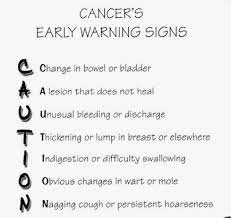This step of the nursing process involves collecting data on a patient.
What is assessment?
Patients with these types of kidney stones should avoid a diet high in purines .
Example of high purine foods are shellfish, organ meat, red meat, alcohol [especially red wine and dark beer], aged cheeses...
What are uric acid kidney stones?
A nurse is exemplifying this QSEN quality when reviewing a patients medication list with all pharmacies the patient uses.
What is Safety?
Cancer treatments usually leave patients with this immunity issue.
What is reduced immune function/neutropenia?
Nurses use the acronym PRICE (Protect, Rest, Ice, Compression, Elevate) to help with these musculoskeletal problems.
What are strains, sprains, and contusions?
This step in the ISBAR structured communication tool addresses significant information on previous illness, treatment/interventions to date, and admission date/diagnosis.
What is the background?
Increasing fluid intake to 3 liters per day in appropriate patients is an intervention for this common urinary issue.
What are kidney stones or urolithiasis?
This QSEN competency promotes inclusion of different parts of the healthcare team working together in the care of a patient.
What is teamwork and collaboration?
These are interventions to prevent skin complications from radiation therapy.
What is avoiding direct sunlight, not applying OTC lotions/ointments, using harsh soaps, and not scrubbing skin?
Doing these actions are part of a focused neurovascular assessment in patients suffering from musculoskeletal trauma/injury.
What is checking capillary refill, skin temperature, edema, and pulses?
This step in the ISBAR structured communication tool provides the reason for communication.
What is the situation?
These are 5 commonly reported symptoms of a urinary tract infections.
What is painful/burning urination, frequent urination, foul smelling odor, back pain, concentrated/cloudy urine
This competency recognizes the patient or designee as the source of control and full partner in providing compassionate and coordinated care based on respect for patient’s preferences, values, and needs.
What is patient centered care?
This is how cancer metastasizes to other parts of the body from the original source.
What is the lymphatic system/lymphatic circulation?
This is a common cause of secondary osteoporosis.
What is long term steroid/corticosteroid use?
This step of the nursing process involves performing actions or assisting with actions that work towards a patient goal.
What is intervention?
Patients obtain this urine sample by cleansing perineal area (front to back for women), then urinating a portion into the toilet, then urinating in the cup.
What is a clean catch midstream urine specimen?
This competency integrates best current evidence with clinical expertise and patient/family preferences and values for delivery of optimal health care.
What is evidence based practice? (EBP)
This acronym is used to help patients identify early warning signs of cancer.
What is CAUTION?

This is a extremely important intervention for the treatment of osteomyelitis.
What is non-weight bearing status on the effected limb?
This step of the nursing process looks at the outcomes of nursing interventions to gauge if goals were met or not.
What is evaluation?
This is a test done after the urinalysis to determine treatment of a UTI.
What is urine culture and sensitivity?
This competency uses data to monitor the outcomes of care processes and use improvement methods to design and test changes to continuously improve the quality and safety of health care systems.
What is Quality Improvement?
These include: alcohol free mouth wash, avoiding irritating foods, soft bristle toothbrush, antifungal mouthwash, and lip lubricant.
What are interventions for stomatitis?
To name a few, these foods are high in calcium and great for those with lactose intolerance.
What are broccoli, almonds, soy milk, tofu, or chia seeds?